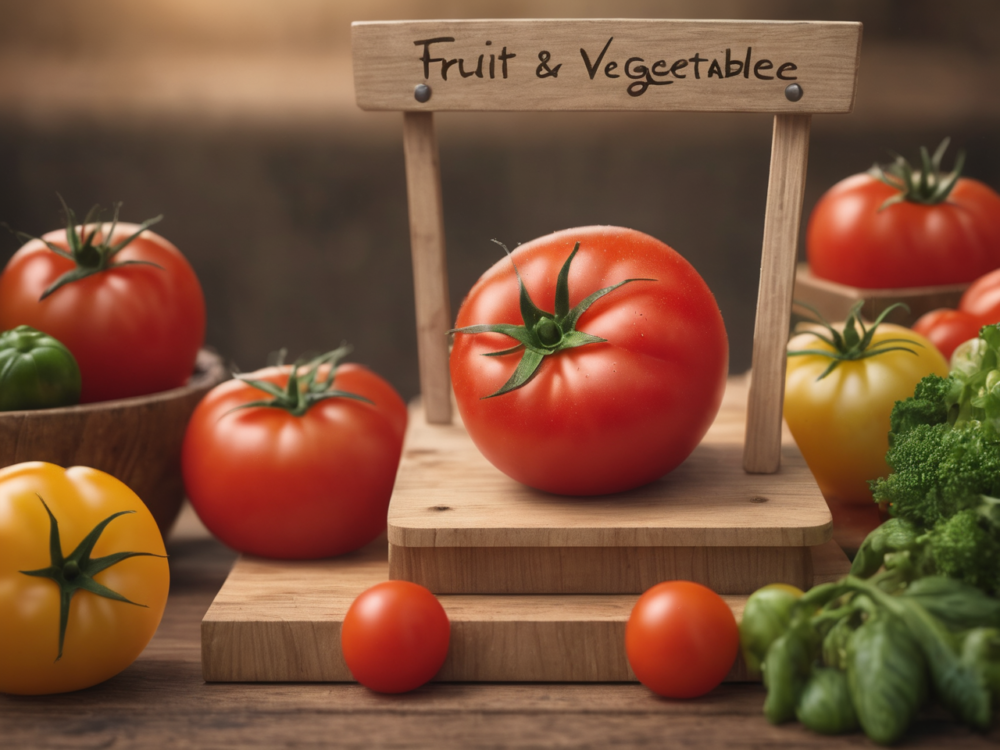The tomato, scientifically known as Solanum lycopersicum, has long been the subject of debate regarding its classification as a fruit or a vegetable. When examined through a botanical lens, tomatoes unequivocally fall under the category of fruits. Botanically, a fruit is essentially the mature ovary of a flowering plant that typically contains seeds. Tomatoes fulfill all these criteria since they develop from the fertilized ovary of a tomato flower and contain seeds within their flesh. Hence, from a scientific perspective, tomatoes are indeed fruits.
However, the classification of tomatoes becomes significantly more intricate when considering culinary, historical, and legal perspectives.
Tomato as a Vegetable
Culinary traditions and everyday usage often deviate from strict botanical definitions. In the kitchen, tomatoes are treated as vegetables due to their savory flavor profile and their frequent inclusion in savory dishes. They are integral components of salads, sauces, soups, and numerous other dishes primarily associated with the savory spectrum of flavors. The savory or umami taste of tomatoes is primarily attributed to compounds like glutamate, which naturally occurs in tomatoes. This culinary perspective is deeply ingrained in our food culture, with generations of cooks and chefs regarding tomatoes as vegetables. This practice has significantly influenced our culinary traditions, making the idea of adding a “fruit” to pasta sauce or salad seem incongruous. Therefore, tomatoes are naturally classified as vegetables in the culinary world.
Tomato’s Journey to Acceptance
To understand the fruit versus vegetable debate surrounding tomatoes, it’s crucial to delve into their historical journey. Tomatoes originated in South America and were introduced to Europe in the 16th century by Spanish explorers. Initially, Europeans were skeptical and even fearful of tomatoes, as they resembled other plants in the same family, such as belladonna and nightshade, which are toxic.
Over time, however, tomatoes gained acceptance in European cuisine, particularly in Mediterranean regions like Italy and Spain. They became staple ingredients in iconic dishes like Italian pasta sauces and Spanish gazpacho. This gradual integration into European cuisine solidified the tomato’s culinary identity as a vegetable, despite its botanical classification as a fruit.
The Legal Perspective
The debate over whether tomatoes should be classified as fruits or vegetables even reached the courtroom, notably in the United States in the 1893 case of Nix v. Hedden. This case centered around the Tariff Act of 1883, which regulated import duties on various goods, including fruits and vegetables. The act did not provide a clear definition of what constituted a fruit or vegetable, leading to legal disputes, particularly concerning items like tomatoes that blurred the line between these categories.
The main issue before the Supreme Court was whether to categorize tomatoes as fruits or vegetables according to the Tariff Act. Justice Horace Gray authored the Court’s unanimous decision, emphasizing that while tomatoes met the botanical criteria of fruits, they were commonly used and perceived as vegetables in culinary contexts. The Court ruled that tomatoes should be classified as vegetables for tariff purposes and thus subject to import taxes.
The Modern Perspective
In today’s culinary world, tomatoes continue to showcase their versatility. While they are often used in savory dishes, they can also be found in desserts and beverages. For instance, tomato-based cocktails like the Bloody Mary and tomato-based jams and preserves highlight the fruit’s adaptability in both sweet and savory contexts. Additionally, chefs and food enthusiasts experiment with tomatoes in innovative ways, blurring the lines between fruits and vegetables, as seen in creations like tomato sorbet.
The Final Verdict: Tomato is Both a Fruit and a Vegetable
In conclusion, the debate over whether a tomato should be classified as a fruit or a vegetable underscores the fascinating interplay between science, culinary traditions, history, and legal definitions. Botanically, a tomato is undoubtedly a fruit, but in the culinary world and our daily lives, it often assumes the role of a vegetable in savory dishes and a fruit in sweet or creative culinary endeavors. The tomato’s unique ability to straddle these categories only adds to its allure and intrigue in the realm of food and cuisine. So, the next time you savor a tomato, appreciate the complexity of this remarkable plant—it is both a fruit and a vegetable.





